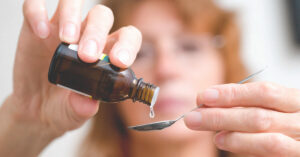In today’s fast-paced world, many people seek natural alternatives to manage common health discomforts. Reflexology, a time-honored healing practice dating back thousands of years, offers a gentle yet effective approach to finding relief. This ancient therapy is based on the principle that specific points on your feet, hands, and ears are connected to various organs and systems throughout your body. By applying precise pressure to these points, you can potentially alleviate numerous conditions and promote overall wellness.
Target Tension Reflexology for illness
Whether you’re dealing with persistent coughing, uncomfortable menstrual cramps, or seeking relief from stress-related symptoms, understanding and applying reflexology techniques can provide a drug-free option for managing these concerns. This comprehensive guide will walk you through the most effective pressure points for eight common conditions, providing you with the knowledge to practice these techniques safely at home.
Reflexology Therapy for Stress, Anxiety, Pain, and Fatigue
Reflexology, an ancient healing practice, suggests that specific points on your feet, hands, and ears correspond to different body parts and systems. While not a replacement for medical treatment, many people find relief through these pressure point techniques.
1. Coughing and Respiratory Issues
The lung reflexology points are located on both feet, in the ball of the foot just below the toes.
- Apply gentle pressure with your thumb in a circular motion for 2-3 minutes
- Work across the entire ball of both feet
- Best performed twice daily during respiratory discomfort
2. Bad Breath
Reflexologists target points related to digestive and detoxification organs:
- Press the center of your foot arch, corresponding to the stomach
- Work the liver point on the right foot, located in the middle of the arch
- Massage the kidney points, found in the middle of each foot pad
- Hold each point for 30 seconds while taking deep breaths
3. Menstrual Cramps
Key reflexology points for menstrual discomfort include:
- The pituitary point (center of big toe)
- The ovary/uterus points (inside of both ankles)
- The lower back region (heel of the foot) Massage these areas gently for 5-10 minutes, especially before and during menstruation.
4. Headaches and Migraines
Target these pressure points:
- The temples of both feet (sides of each big toe)
- The neck point (base of all toes)
- Solar plexus point (center of both feet) Apply firm but gentle pressure for 5 minutes on each point.
5. Digestive Issues
For stomach discomfort and indigestion:
- Work the solar plexus point (center of both feet)
- Massage the small intestine points (middle of the arch)
- Press the colon points (outer edge of feet) Hold each point for 1-2 minutes.
6. Insomnia
Sleep-promoting pressure points:
- The pineal gland point (center of big toe)
- The brain point (tips of all toes)
- The heart point (under the ball of the foot) Gentle massage these points for 10 minutes before bedtime.
7. Stress and Anxiety
Key relaxation points:
- The solar plexus (center of feet)
- The adrenal glands (middle of inner arch)
- The shoulder/neck region (base of toes) Massage these points for 15 minutes during times of stress.
Best Practices for Reflexology
General Guidelines
- Use firm but gentle pressure
- Maintain consistent breathing throughout
- Stay hydrated before and after sessions
- Start with shorter sessions (5-10 minutes) and gradually increase duration
When to Avoid Reflexology
- During acute injuries
- Over varicose veins
- If you have foot infections
- During first trimester of pregnancy (unless working with a certified professional)
Tips for Best Results
- Practice regularly for optimal benefits
- Listen to your body’s response
- Combine with other relaxation techniques
- Keep a journal to track improvements
Remember: While reflexology can provide relief for many common ailments, it should be used as a complementary therapy alongside proper medical care. Always consult healthcare providers for serious or persistent conditions.

